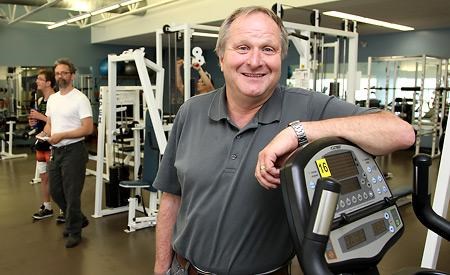In developing a comprehensive regional recreation strategy for City of Powell River, Powell River Regional District and Tla’amin (Sliammon) Nation, citizen engagement is deemed imperative.
Ray Boogaards, the city’s director of parks, recreation and culture, said recreation consultant Gary Young was contracted last year to provide recreation studies for the city and the regional district, but his mandate was to provide an overview. Boogaards and his staff are now tasked to determine how a comprehensive plan unifying the various recreation programs throughout the region might function. Job one is to hear feedback from the consumers.
“We need to get out to the people and determine what they really want to see,” Boogaards said.
Young did an excellent job with both reports, according to Boogaards, but further elaboration is required to develop a regional recreation strategy.
“I’ve said to city council that Gary did exactly what was called for in the request for proposals process,” Boogaards said. “That was to interview X amount of focus groups and interview X number of individuals. However, you get such a limited scope from doing that.”
Boogaards said to develop programming, it is imperative to ask what it is that people truly want to do and what services they want.
When Powell River Recreation Complex was conceived and built in the early 1970s, the regional district was not invited to be participatory. Boogaards said the city had the resources to build the complex without any involvement from the regional district or Tla’amin.
“When we look at a small population of 19,000 people (regionally), does it make sense that we have three local governments that are providing the same services?” he asked.
The community engagement process has begun. Boogaards said there have been meetings with some of the arts and culture groups. He’s also met with groups to determine barriers for people with mobility issues.
Boogaards said he was taken for a tour throughout the recreation complex by a woman in a wheelchair and was shown exactly where all of the barriers are in the building.
“In the next 10 years, as one of our goals, do we say we’ve got to get rid of those barriers? When we look at our demographics now, our senior population is growing. We have more retirees moving into the area. Our average age is 51 or 52 years old, so where are we going with that? What kind of services are we looking at?”
Recreation in the Powell River region is more involved than the recreation complex and its various services. Boogaards said it can’t always be expected that people living in the regional district or at Tla’amin will come to the complex.
For example, there are fitness programs, hiking programs, and other recreational programs throughout the regional district. Boogaards said in developing any regional programming, it is imperative to make sure volunteers’ toes aren’t stepped on.
“They have created hundreds of hours of programming and we don’t want to take away from that, either,” Boogaards said.
“What we have to ask is: do you want fitness classes, do you want cultural groups, do you want us to work with the festivals, do you want us to focus on arts and culture, or tourism, or museums? All of these things we can’t determine until we have a solid base of people telling us. From there, we can really take a good look at what direction we need to go. We are not going to go in a direction until we know for a fact it’s what the community wants.”
Boogaards said there is no desire to create a system that is going to be a drain on taxpayers.
“There has to be a balance,” he said. “We have to make sure we have discussions not only asking people what they truly want, but also, what they can truly afford.”
Boogaards said the city’s recreation team, in spearheading the regional recreation study, wants people living in the regional district and Tla’amin to know that this is not just being looked at as a revenue opportunity.
“This is an opportunity to truly form something that is unique,” he said. “There are lots of communities that share services. How can we create this right from the start and not look back at the past when the city didn’t invite our neighbours to participate and be part of it?
“We’re starting with a new vision. Let’s start it together.”



